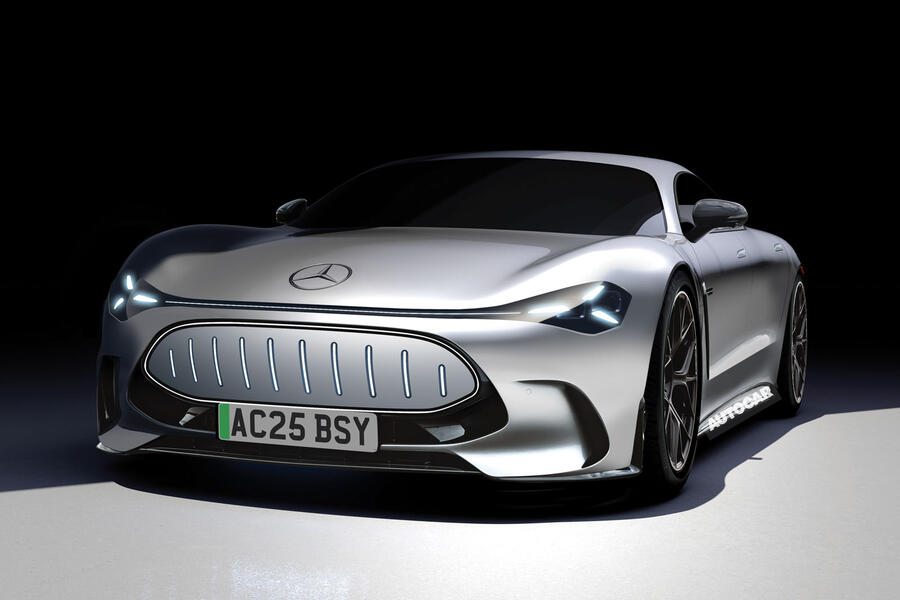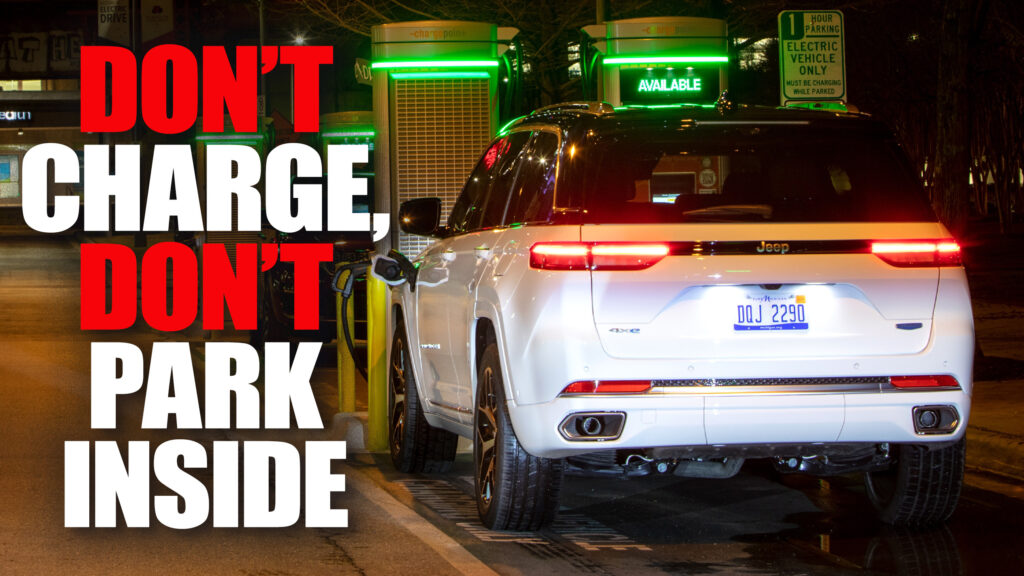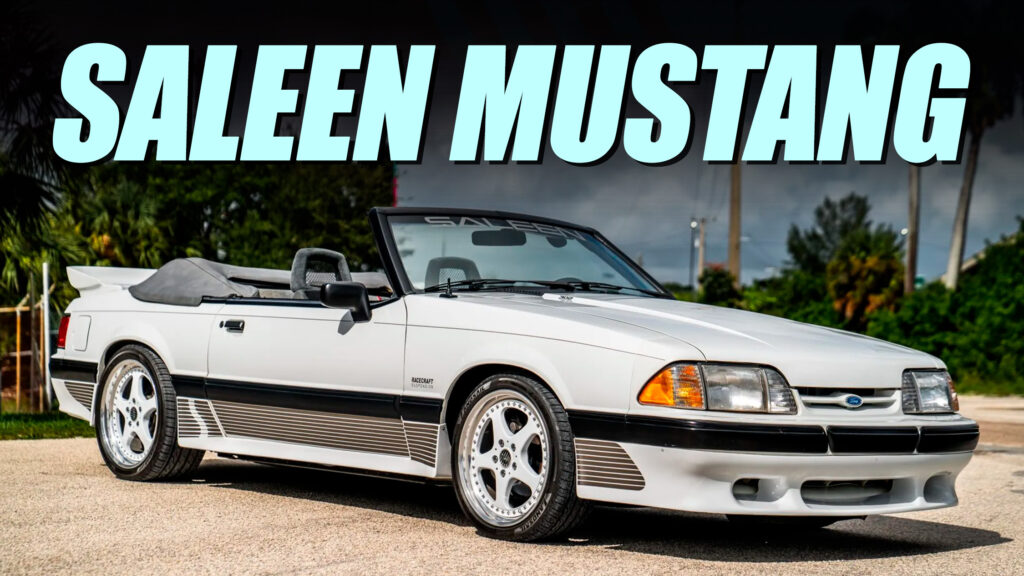News
Mercedes-AMG’s Electric Supercar: A Bold Leap into the Future of Performance

New electric supercar is considered a key part of Mercedes-AMG's futureRetro-inspired supercar will fly the flag for AMG's battery-powered future
Mercedes-AMG is hatching plans for a spectacular electric supercar that will launch the performance brand into the EV age.
The new performance halo model was previewed by last year’s retro-inspired Vision One-Eleven concept, and it is described as a “brand-defining successor to the SLS Electric Drive”, the 730bhp quad-motor EV that was launched in 2013 and which cost £333,000. But while that car was limited to just nine examples, the new AMG supercar is planned for significantly higher production numbers when it arrives later this decade.
Making its flagship less of an exclusive offering is central to AMG’s evolving electrification strategy. It has already launched powered-up versions of the EQE, EQE SUV, EQS and EQS SUV, with specific motors and battery technology separate from those of their standard siblings.
The new electric supercar is considered a key part of Mercedes-AMG’s future, despite CEO Michael Schiebe moving to extend the life of some of AMG’s more profitable combustion-engined models amid slower than expected sales of its EVs.
However, Schiebe leaves little doubt about the company’s ultimate trajectory, telling Autocar: “It’s clear that we are going all-electric.”
The new supercar will be charged with cementing AMG’s performance credentials as it switches from high-output combustion engines to electric power. Autocar understands it is likely to outpace the 1049bhp Mercedes-AMG One, whose Formula 1-derived, V6/electric hybrid set-up is good for 0-62mph in 2.9sec and 0-186mph in 15.6sec.
Despite being tipped for higher production numbers than the SLS Electric Drive, the forthcoming supercar will be priced well above the new £160k AMG GT and is likely to take the brand into exclusive territory, competing with the Porsche Mission X and Alfa Romeo 33 supercars.
The production version of the Vision One-Eleven – itself inspired by Mercedes’ experimental C111 supercars from the 1970s – is set to use the AMG.EA architecture, which has been engineered specifically for AMG’s electric models. The platform is modular in its design, with varying lengths, wheelbases and track widths making it suitable for a wide range of models.
The upcoming production version of the Vision AMG – a four-door replacement for today’s GT 4-Door Coupé that is due to be revealed next year – will be the first new model to use it.

Like that car, the new supercar will use an 800V electric architecture and a new cylindrical-cell lithium-ion battery featuring silicon-anode developments from US battery specialist Sila.
Power will come from high-revving axial flux electric motors. To be used first in the electric GT 4-Door, they were originally developed by Yasa, before the British-based company was bought by Mercedes-Benz in 2021. Since then, the motors have been further advanced by a team of engineers from both Yasa and Mercedes-AMG.
With a highly compact disc shape that allows them to be packaged in small spaces, they are roughly half the size and half the weight of the conventional synchronous and asynchronous electric motors employed by the AMG-fettled EVs currently on sale.
Schiebe sees the axial-flux motor as a defining technical aspect of future electric AMG models, in the same way AMG’s various V8 petrol engines have been over the years.
“Customers who came to the brand because of the V8 did not come because they just wanted to have a big engine,” said Schiebe.
“They came because they loved the technology that we put into the car. So when it comes to electric driving, I’m pretty sure they will jump into that new technology because it will be the latest and greatest that you can get.”
Yasa’s axial-flux electric motors have already featured in the plug-in hybrid systems in the 986bhp Ferrari SF90 Stradale and the 1479bhp-plus Koenigsegg Regera.
Yasa officials have revealed that the patented electric motor to be used by AMG offers more than twice the power of Yasa’s existing electric motors on a power-to-weight basis: up to 489bhp and 590lb ft, with a weight of just 24kg.
They also revealed that a number of different drivetrain layouts have been developed, including a single- front and twin-motor rear set-up as well as a quad-motor arrangement with two front and two rear units. Depending on the layout, this confirms the next generation of electric AMG models will have a significant increase in power and performance over that of those models on sale today.
Production of AMG’s axial-flux motors will take place at Mercedes’ Berlin-Marienfelde plant, starting next year. However, Schiebe said AMG will not abandon its ‘one man, one engine’ philosophy, adding: “This is part of our DNA. We will have something in the future which is comparable to ‘one man, one engine’, and it will not be just a marketing effort.”
Jeep Recalls 200,000 Hybrid Models Over Fire Risk Concerns

Rare 1989 Saleen Mustang Convertible: A Classic with Low Mileage and Custom Upgrades

Remembering Bruno Sacco: The Visionary Behind Iconic Mercedes Designs
BYD’s Strategic Shift: Overcoming EU Tariffs with Local Production
 Firm's new European advisor tells Autocar impacts from tariffs are "temporary"
Firm's new European advisor tells Autocar impacts from tariffs are "temporary"
BYD describes the impact of EU tariffs on imported Chinese EVs as “temporary damage” and anticipates it will be the best-positioned Chinese brand in the coming years thanks to local production plans and a flexible powertrain offering.
The brand, which has grown rapidly in Europe over the past two years, is due to open a new factory in Hungary by the end of next year, and another in Turkey soon after.
These will allow it to build European market cars in Europe and avoid the substantial tariffs imposed on Chinese-manufactured cars by the EU.
Speaking at the launch of the Seal U DM-i plug-in hybrid, the first PHEV to join BYD’s European and UK line-up, special European advisor Alfredo Altavilla told Autocar the brand was not happy with the tariffs but said plans were in motion to circumvent them.

“This is going to be temporary damage for BYD,” he said. “In less than a year from now we will become officially a European manufacturer.
“So if you ask me, are you happy with the tariffs? No, but the damage is going to be more limited for BYD than for other Chinese OEMs in terms of volume ambitions. BYD has been the most cooperative Chinese brand with the European Commission. We get the ‘benefit’ of a lower tariff compared with other Chinese OEMs.”
BYD’s cooperation with the European Commission appears to have paid off, at least in the short term.
Following the EU’s decision to raise the tariffs earlier this year, the firm currently pays 17.4% on imports on top of the basic 10% duty applied to all other Chinese brands.

Geely, owner of Polestar, Volvo and Lotus, meanwhile, is required to stump up an extra 19.9%, while MG parent SAIC’s rate is a whopping 37.6%. BYD will be the first Chinese brand to open its own bespoke production facility in Europe.
The move will help cement BYD as a ‘local’ company, a goal outlined to Autocar earlier this year by the company’s president, Stella Li.
“Of course, the factories will have a big impact,” said Altavilla. “This is not just for the tariffs.” He added the move will also help BYD move “much faster” to integrate “European needs and European tastes” into the next generation of its cars.
